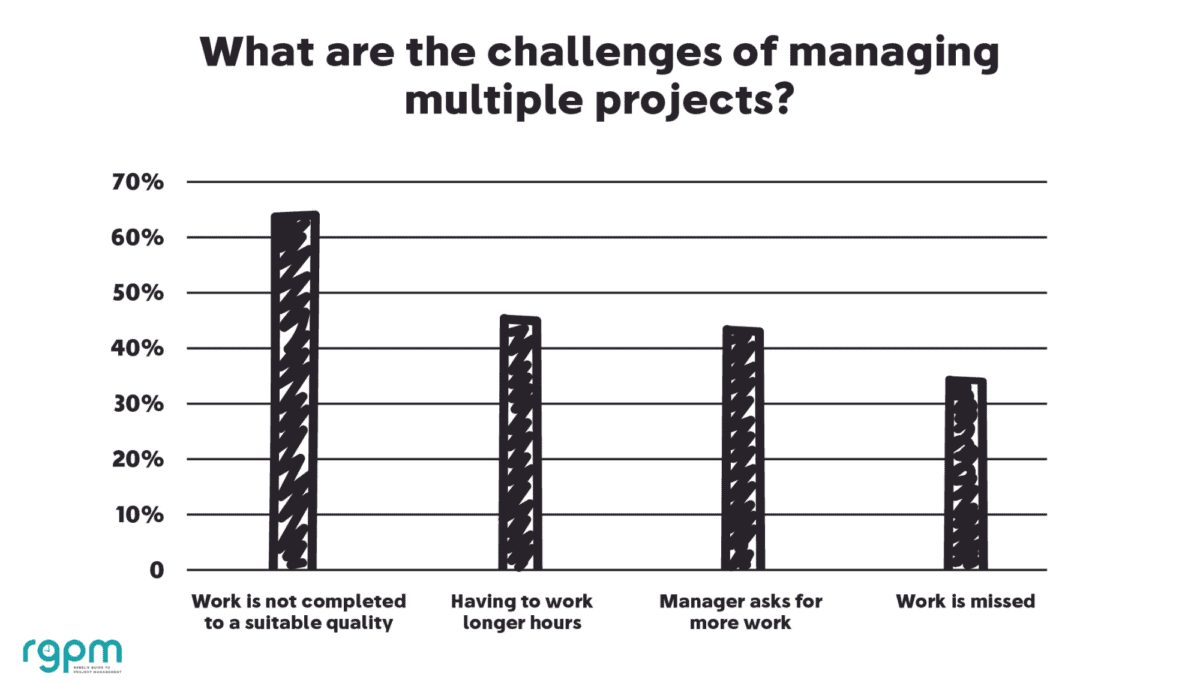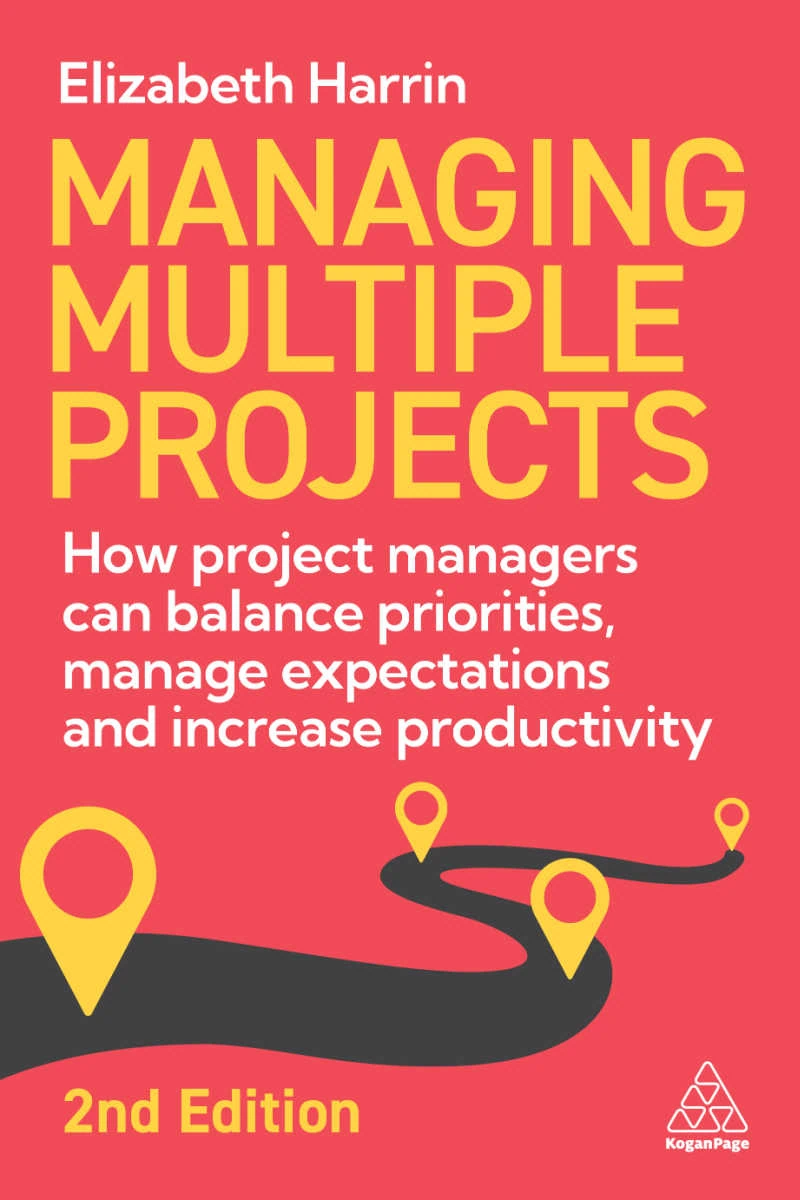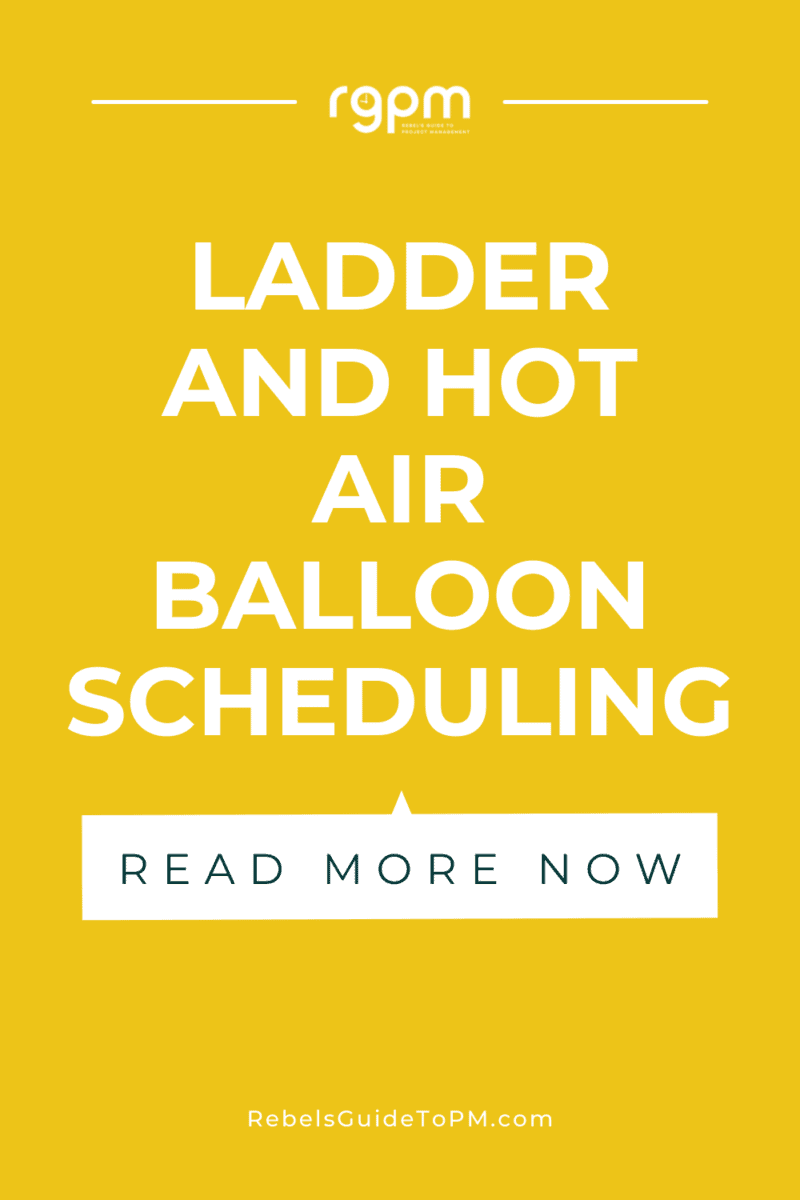Ladder and Hot Air Balloon Scheduling
This blog is reader-supported. When you purchase something through an affiliate link on this site, I may earn some coffee money. Thanks! Learn more.
Project managers tend to live or die by their schedules. They shape decisions, priorities and stakeholder engagements. We feel good when the schedules give us confidence.
We feel nervous when they change a lot.
We feel out of control when the schedule is clearly fictional with no chance of ever being delivered.
It’s no surprise that scheduling can be such an emotional activity. According to Teresa Amabile and Stephen Kramer in their book, The Progress Principle (2011), there are three things that shape the positive feelings you have about work time:
- making meaningful progress
- events that directly help project work
- moments of positive interpersonal activity.
Scheduling is all about making progress towards a meaningful goal so it’s no wonder dates and deadlines play such an important part in whether work feels in or out of control.

Managing multiple project schedules adds another layer to hitting deadlines. Instead of moving towards one meaningful goal, you are moving towards several at the same time. You’ve got several independent project schedules, whether they are detailed Gantt charts, task lists with dates or timelines in some other format.
Individually, they may all look manageable. But you aren’t working on them individually. You have a multi-project portfolio to review and that means you need a big picture view of task deliverable dates so you can better organize your calendar.
That’s where ladder and hot air balloon scheduling come into play. Let me explain what I mean.
The ladder view: making a detailed, combined schedule for all projects
Think of standing at the top of a ladder. You can see the ground quite clearly. You’ve got a full view of what’s going on, and your view is made all the better from being up a little bit higher than you were at ground level.
When you combine your project schedules in a detailed way, the ladder view is useful for identifying:
- What needs to be done when across multiple projects from one plan
- Potential resource conflicts where people are allocated to multiple projects at the same time
- Busy points in the coming months so you can plan accordingly
- Where activities can be merged to benefit the team, for example combining governance meetings.
The ladder view is also a useful tool for communicating about your projects and provides a visual overview of what’s going on for you, your project sponsor and your team.
The ladder view approach is suitable for portfolios where the vast majority of your work is related, there are a lot of dependencies between tasks and you use common resources. A detailed, consolidated schedule is also a useful communication tool with your team or project sponsor if all the work is relevant to them.

The hot air balloon view: making a high-level schedule for all projects
Now think of being up in a hot air balloon. You are higher than standing on a ladder so you can’t see the ground quite so clearly. You can pick out the big features in the landscape: rivers, hills, roads, towns, and clusters of industrial buildings. This is the view we’re aiming for with a high-level schedule.
The hot air balloon schedule is useful for quickly identifying periods where multiple projects have deliverables or milestones due at the same time so you can plan accordingly. It is a roadmap for what’s coming and it gives you a big picture view with relatively little effort.
The benefit to this approach is that it is far less time-consuming than creating a detailed combined schedule. It highlights the busy times and gives you that hot air balloon view of your upcoming deadlines.
This way of looking at your work is an overview; you still need to maintain an individual schedule for each project so that you have somewhere to track progress at a detailed level. It is also only a snapshot of a single moment in time, as project schedules change.
However, as a way to identify what’s coming up so you can be prepared, the hot air balloon view is very helpful. It is also a great communications tool if you are trying to explain why you can’t take on any more work or why perhaps you need to recruit extra people in your team in a way that a detailed task by task activity listing might be overwhelming for the person looking at that information.
This approach is best for projects that don’t feel they would suit a fully-combined, detailed master schedule. When your projects are unrelated, or your workload doesn’t group into a single bucket, then the hot air balloon view shows you the big picture in a relatively low-effort way.
There is no hard and fast rule for whether the ladder view or the hot air balloon view is going to be best for you, but you probably have an instant feeling for which one would give you the best visibility and control.
You can use one approach for certain projects and the other for the rest of your portfolio: mix and match as you see fit to give you the best visibility for the work that is to come.
You can learn how to create both a ladder view schedule and a hot air balloon schedule in my book, Managing Multiple Projects. Consolidating your schedules means you can predict when you will be busy, and that’s very value information for you and your team.
This is an edited extract from Managing Multiple Projects: How Project Managers Can Balance Priorities, Manage Expectations and Increase Productivity (Kogan Page, 2025.)
Get your copy
Managing Multiple Projects: How Project Managers Can Balance Priorities, Manage Expectations and Increase Productivity is a book that offers a comprehensive framework for juggling your workload and still leaving the office on time.


